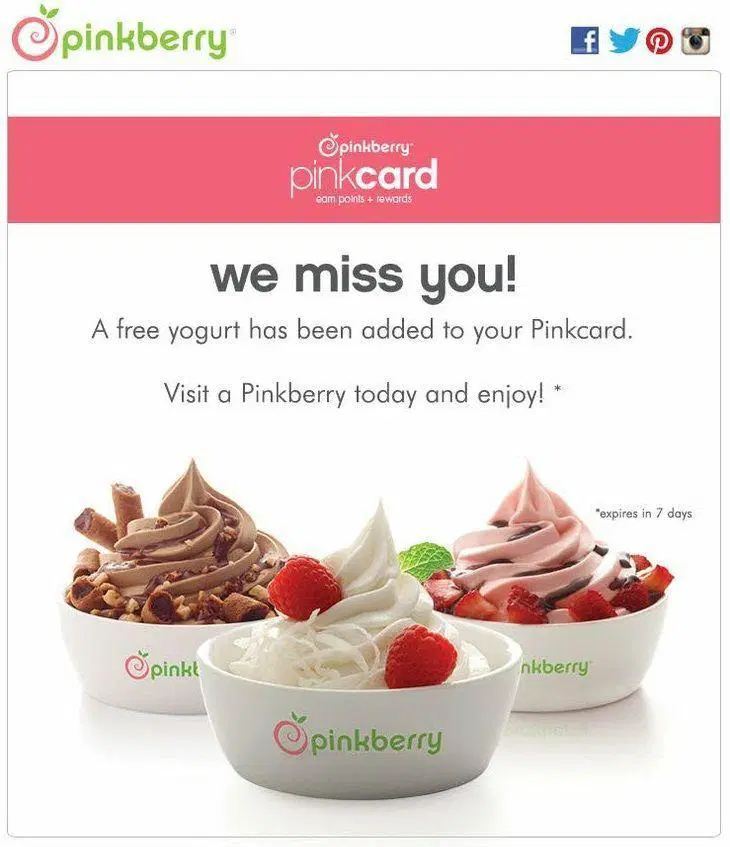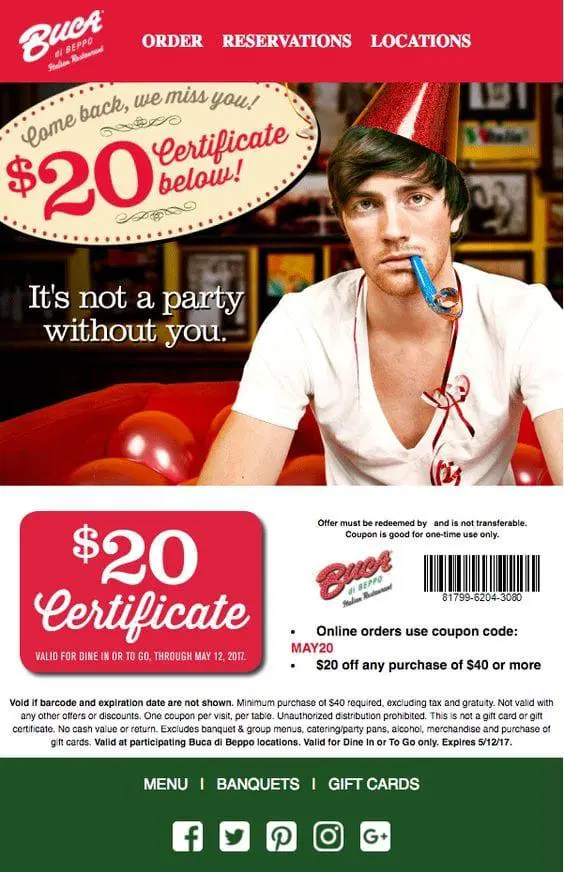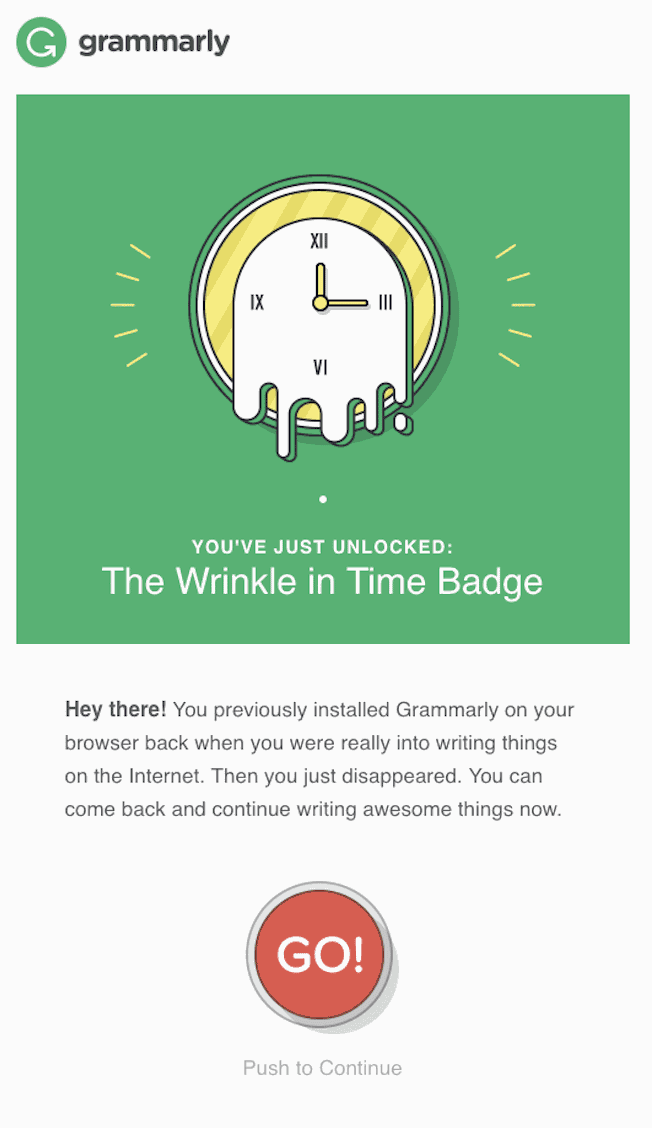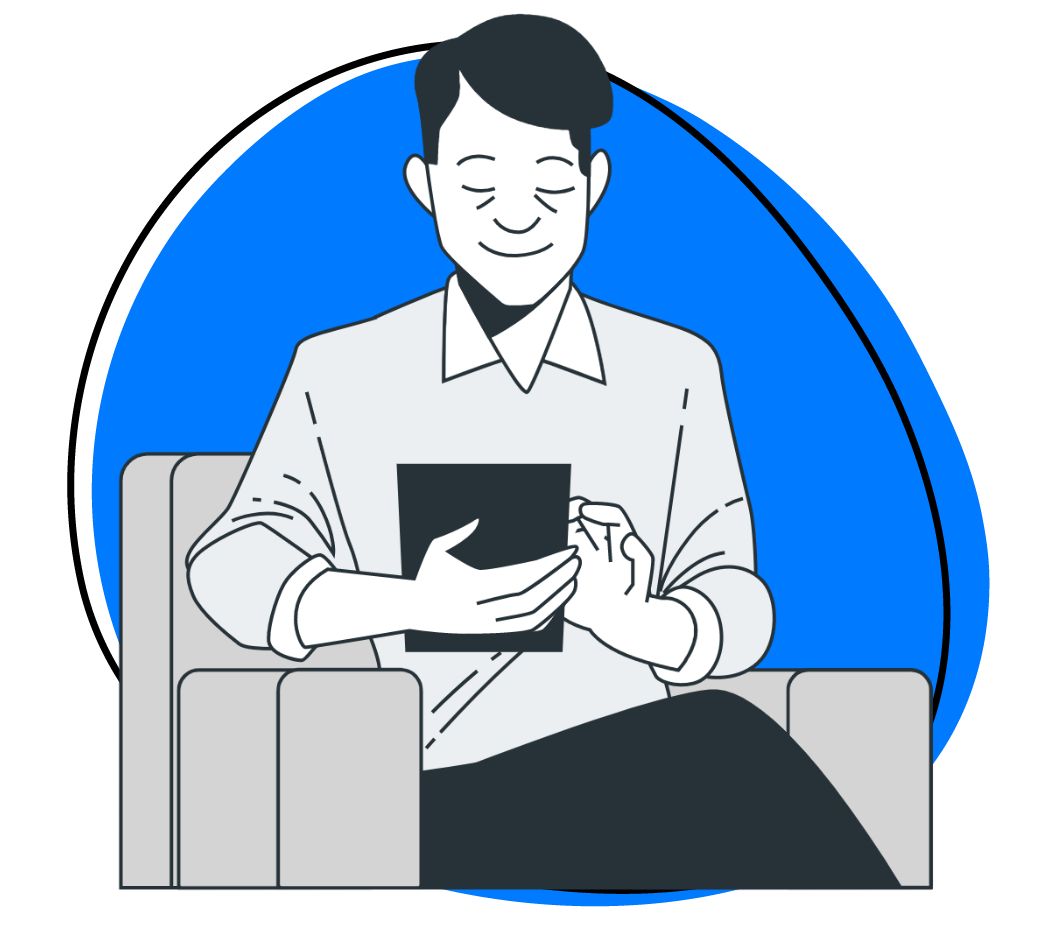Email marketing plays a crucial role in your efforts to get customers but might be even more critical for your win-back campaigns. Email is a proven way to engage and deliver repeat messages, especially when someone has forgotten about your company.
Before you go stale, it’s time to remind these customers exactly what they loved about you in the past and why it’s still there. It’s time to win them back.
Reports differ, but more than half the people in your email list are inactive at any given moment. We love this stat because it acknowledges that there’s work to do and that people go through different periods of activity (and inactivity).
Your marketing team needs to work to keep as many people active as possible and prevent others from moving from inactive to not interested. That’s where the win-back campaign comes into play. It’s a proven method for increasing customer lifetime value and expanding your sales.
It can be especially important around the holidays too!
So, we’ve put together this helpful guide to keep your customers around and generate a little more revenue. When we want to know what a win-back strategy is and how it’ll work, we’ve got to start with who we need to win back!
Who Qualifies as a Lapsed Customer?
Understanding how to invite customers back starts with knowing who needs that outreach.
Determine who to win back by looking at your current sales cycle. How long is the gap between regular repeat purchases? Have your users taken steps that usually signal purchase intent but never followed through? When people are outside the typical sales cycle, then they might be ripe targets.

How you judge activity also plays a role. It can help to start by asking if you view your customers are “buyers” or “subscribers.” Focusing on them as buyers would set your lapsed-customer metrics to things like people who aren’t clicking on a coupon email to go to your store or haven’t purchased for a while. They may be reading your emails, but they’re not making purchases.
The subscriber approach focuses on people who aren’t taking actions that you might want for the subscribers of your newsletter. So, they become inactive when they don’t open your emails at all or when they only do so to reduce the amount of email they get — either to fewer emails or unsubscribing altogether.
Once you have the general metric for gauging disinterest, you’ll want to go back to that standard gap between purchases to determine how long someone needs to show disinterest to qualify as a lapsed customer. Remember to consider how often you send out emails or notifications and then set a reliable timeframe to capture people who haven’t bought lately but also haven’t forgotten about you.
If you’re still struggling to determine who is a lapsed customer, here are a few things that someone may do with your email to signify that they’re no longer interested:
- Unsubscribe from promotional email contact
- Delete your emails
- Simple ignore your emails and let them linger in the inbox
- Create a filter to weed out promotional emails — though now Gmail and other services do this for users automatically
- Report your message as “Spam,” which should deliver a notice to you, but some email clients will also now pair with unsubscribe actions.
Research says that you’re going to have about 25% of customers lapse every year, but that doesn’t mean they’re permanently lost. You can win them back. Your first step is to understand why they left. Then, you’ve got two steps to take: make changes to prevent future losses for the same reasons and also to create a new email campaign to reach out and make an offer these former customers can’t refuse.
Why Do People Disengage?
There are a lot of studies about why people disengage over the long term. There can be issues with websites, social media, company culture, and much more. However, because most companies keep in touch with their customers via email, we’ll focus narrowly on that aspect of your business.

Email Monks has a terrific infographic with stats that every marketing team should commit to memory concerning why your subscribers disengage. According to its research, here are some of the top reasons:
- Too many emails
- Too much information in emails
- Clickbait subject lines without a compelling offer inside
- Emails are not designed for mobile devices
- Complex or confusing design that hides relevant content
- Repetitive offers or irrelevant content for your brand
- Initially signing up for just a single, one-time offer
- Their contact preference is not email
- Something in their life has changed from job and home to personal situations
These points boil down into a few things your marketing team should pay attention to during every campaign. It tells us that people want relevant information with useful offers and that your design should make it easy to find, learn, and click. Life changes for your customers just like it does for you, so giving them a way to share updates via preferences or profile data can also help you know when a customer is disengaged and can be won back or when they are breaking ties.
Remember that mobile email has been the dominant customer tool since 2017 when it reached a 2:1 preference compared to web email systems, and even higher compared to desktop software like Outlook.
What Is a Win-Back Strategy That Works?
Turning a lapsed customer back into a regular buyer is five times cheaper than acquiring a brand-new customer. So, let’s save some money and win back those people who’ve already shown a willingness to buy what you’re offering.
Winning them back takes a full-throated effort. Yes, you often hear about a win-back email, but what you’ll really need is a full win-back campaign. (These may also be called re-engagement campaigns). And it’s all about email. That’s your best way to get in front of someone in as targeted a way as possible — unfortunately, retargeting campaigns typically can’t help here because it’s been too long since people were on your site or putting things in a cart for the system to catch them.
You’ve likely seen them when you stop reading a company’s emails, and they usually come with headlines like:
- Is it over between us?
- Are you still looking for help with [X]?
- How is your business going?
- Are you sure you want to say goodbye?
- Come back?
They’re a series that make different requests, usually getting simpler over time, all encouraging you to take some action. When you do something, anything really, the brand hopes you’ll read its next email and be more willing to buy. Often, that is precisely the case.
The reason you should create a full campaign and a series of emails is that you need to get people to act. Subsequent emails do just that. According to leading data, 45% of people who get a win-back or re-engagement email campaign don’t read the first email, but they do read following emails.

By creating a series of personalized, targeted messages, you can help push lapsed customers to come back. It also enables you to weed out those who aren’t interested, which can help your business by better understanding the characteristics of your most valuable customers.
The specific elements or offers you make are going to depend on your business. However, most companies include a mix of email types in their campaigns, such as incentives and offers, small quick notes to say “hi” and hope people engage, and last-ditch efforts with more dramatic headlines (Is this it?!) and more significant savings.
You can also consider asking for feedback or other input to simply get someone to think about you again without asking them to buy. Interaction and encouragement, without necessarily having a sales pitch, may help people think of you and ultimately lead to another purchase down the road.
Let’s look a little deeper about what these emails do and don’t need.
What Should Re-engagement Campaigns Have?
Re-engagement or win-back email campaigns are best when they have at least three emails and start within two months of someone becoming inactive according to your metrics. Some of the best that we’ve seen in our inbox or around the web are a little longer and have common characteristics.

We’ve peppered our favorites throughout this post, and here are some of the standard, essential elements you’ll find in them:
They’re Casual
Emails are part of a conversation. Think about how you’d approach a customer who is also a friend. Write to them like you’d have a conversation with an old friend you’re seeing again. You’re not screaming about a 10X return for their life, but you might ask them how they’ve been or what’s changed. You might even try a joke because light humor can usually set everyone at ease.
They’re Segmented
You likely have many different customer types. This means they’re going to have different wants, needs, and reasons for losing interest. Segment people into groups so you can narrowly target what they do and don’t like about your offer. It’s a great idea to segment by their current lifetime value because you want those repeat buyers to come back and become repeat buyers once again!
They’re Personal
You’ve got details on your customers and should use those. Greet people by name and mention their company name if you’re in the B2B space. Then, take those segmentation efforts and speak to the benefit of each group. Keep the message clear and targeted, but short too.
They Target an Emotion
Most purchases are tied to an emotion. This might be happiness or feeling good about oneself or reducing stress and helping someone relax by solving problems. Write your email to remind the reader about how you’ve helped and how it made them feel. A little nostalgia or guilt can be a tasty topping, too, if you use it in one of your email series.

They’ve Got a Good Deal
If you want someone to buy from you again, they need a compelling reason to buy. That includes the offer that you’re making. Give them something worth returning for, which could be larger-than-normal savings or an offer specifically targeting their needs (thanks segmentation!). You can also use one of the final emails to give something away, whether it’s a real freebie or an upgrade for existing products or new purchases.
They Make it Easy to Unsubscribe
Ever get an email that you didn’t want and then have a little bit of rage when it doesn’t have an unsubscribe option or when the sender doesn’t honor your unsubscribe request? We know it’s not just us. Your customers actually appreciate it, and it’ll help weed out people who are or aren’t interested in what you offer. Plus, you get a chance for one last Hail Mary pass chance by putting an offer on that unsubscribe page.
P.S., it’s often illegal to not have an unsubscribe option in your commercial emails.
What Should You Avoid in Win-Back Emails?
If you want to know what to avoid in your re-engagement campaigns, think of emails you’ve gotten in the past and didn’t like. That’s your best roadmap. Here are a few other best practices for things to avoid:
- Set up a timeline and stick to it. Don’t wait too long to reach out to customer.
- Don’t forget to acknowledge that these people have already bought from you in the past and likely trust you.
- Don’t forget to personalize and use your data.
- Don’t forget to ask what went wrong and instead treat them like everything is fine.
- Don’t overload with deals, language, photos, and more. Keep things simple.
When you’re building a campaign, think about your experiences. What would it take for a company to win you back? How would you like to tell them what went wrong earlier?
Images Rule in Smart Win-Back Campaigns
Let’s end with one final note on these win-back campaigns: they’re amazing when the image fits the tone and the purpose. Scroll back up and look at the examples we have throughout and see which is your favorite.
The copy is personalized, and they hint at deals and emotions, all of which are supported by the visuals. They draw in the eye to get you engaged and help the promise you’re trying to make. Visuals play a fantastic role in creating a connection and delivering an understanding, and they give you a chance to have a little humor along the way.
Color is also an important aspect of your visuals too, because we know it boosts sales.
That’s where top tools like Zight (formerly CloudApp) come into play here. We’ve made it easy for you to generate images with a snipping tool compatible with Mac and Windows. You can also create GIFs that can invite, encourage, and capture the heart of your audience. You can even give them a quick, personalized feeling (despite it being sent to an entire category) by doing something like taking a beautiful marketing image and writing on top with a hand-drawn element.
Or, if you want to make the pitch that customers will love your offer, you can literally show someone doing that with a GIF creator or video-style slideshow – which you can build via a screen recorder. Build that immediate emotional connection that images are known for and get a few customers back in the process.
We know that you’re targeting people to get them to buy again, so you’re not looking to spend a lot of money as you A/B test. That’s why you can click here to get a free Zight (formerly CloudApp) trial and start generating recurring revenue before there’s any question on ROI.












